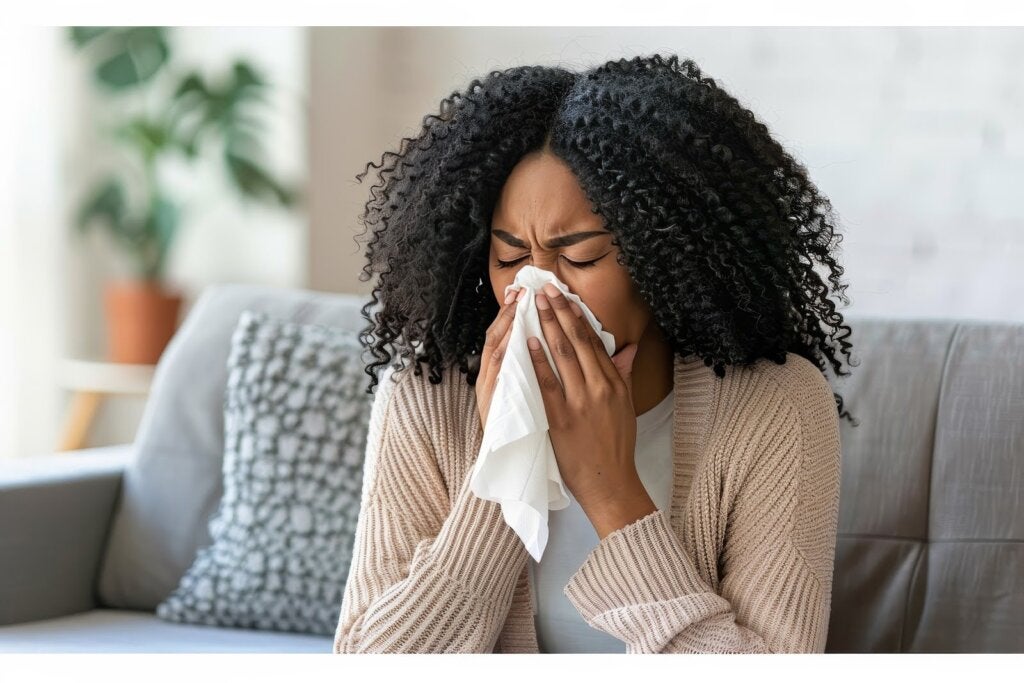
As the leaves begin to change and the crisp autumn air settles in, many of us look forward to the cozy comforts of fall. However, for those who suffer from allergies, the new season can also bring a host of challenges. Fall allergies, often triggered by ragweed pollen, mold spores, and dust mites, can turn this beautiful season into a time of discomfort and frustration. Sneezing, itchy eyes, and a constant runny nose can make it hard to enjoy the joys of autumn.
These allergens don’t just stay outside — they easily infiltrate our homes, affecting indoor air quality and our overall well-being. This is why preparing for the fall allergy season is crucial. By taking proactive steps to manage allergens, you can ensure that your home remains free from the discomfort of allergies.
Maintaining a healthy home environment is not just about comfort; it’s about safeguarding your health and enhancing your quality of life. With a few strategic changes and a commitment to cleanliness, you can enjoy the beauty of the fall season without the burden of allergies weighing you down.
Is My House Giving Me Allergies?
Fall is a season of transition, bringing cooler temperatures and vibrant foliage. However, it also heralds the arrival of fall allergies, which can be as troublesome as their spring counterparts. Understanding the causes and symptoms of these allergies is the first step in managing them effectively.
Causes of Fall Allergies
The primary culprits of fall allergies are ragweed pollen, mold spores, and dust mites.
- Ragweed Pollen: Ragweed is the most common trigger of fall allergies, releasing pollen from late summer through the fall. Even if ragweed isn’t prevalent in your area, its lightweight pollen can travel hundreds of miles on the wind, affecting people far from its source.
- Mold Spores: Mold thrives in damp environments, and the decaying leaves of fall provide the perfect breeding ground. As leaves accumulate and decompose, mold spores are released into the air, often making their way indoors.
- Dust Mites: While dust mites are present year-round, they can become more active in the fall as we spend more time indoors with our windows closed, allowing these microscopic creatures to flourish in warm, humid environments.
Symptoms of Fall Allergies
Common symptoms of fall allergies include sneezing, runny or stuffy nose, itchy eyes and throat, and even coughing or wheezing. These symptoms can mimic those of a cold, making it difficult to identify the true cause. For many people, these symptoms lead to disrupted sleep, fatigue, and difficulty concentrating. They affect daily activities and overall quality of life.
Impact on Indoor Air Quality
Allergens from outside can easily infiltrate our homes through open windows, on clothing, and on pets. Once inside, they can significantly degrade indoor air quality. Poor indoor air quality not only exacerbates allergy symptoms but can also contribute to respiratory issues and overall discomfort for all household members.
“With so many of us suffering from allergies, let’s remember that indoor air quality can be worse than outdoors!” says Maid Brigade President Raychel Leong-Sullins. “Dust, dander, and pollen can pollute our homes. A thorough regular cleaning, vacuuming with high quality equipment, and air purifiers can help us breathe better.”
Maintaining good indoor air quality is essential for reducing allergy symptoms and ensuring a comfortable living environment. This involves understanding how allergens enter our homes and taking steps to minimize their presence. In the following sections, we’ll explore practical tips to help you keep these allergens at bay and maintain a healthy home throughout the fall season.
What Helps Allergies at Home?
Maintaining an allergy-free home requires a proactive approach, especially during the fall season when allergens are at their peak. Here are some essential tips to help protect your home from allergens with help from a house cleaning service.
1. Regular Cleaning Routine
A consistent cleaning routine is your first line of defense against indoor allergens. Regular cleaning helps reduce the accumulation of dust, pollen, and other allergens that can trigger allergy symptoms. This is where Maid Brigade’s professional cleaning services can make a significant difference.
Maid Brigade’s team is trained to provide thorough cleaning that targets common allergy culprits. Our PUREcleaning® process uses electrolyzed water, which is both effective and environmentally friendly, eliminating allergens without harsh chemicals. This innovative approach ensures that your home is not only clean but also healthier for you and your family.
2. Control Indoor Humidity
Maintaining the right indoor humidity levels is crucial for reducing mold growth and dust mite activity. Ideally, indoor humidity should be kept at 30–50%. High humidity creates a breeding ground for mold and dust mites, while low humidity can dry out nasal passages and worsen allergy symptoms. To control humidity:
- Use Dehumidifiers: These devices help maintain optimal humidity levels, especially in damp areas like basements.
- Ventilate Properly: Regularly ventilate your home by using exhaust fans in bathrooms and kitchens, and open windows when outdoor conditions allow.
3. Use of HEPA Filters
High-Efficiency Particulate Air (HEPA) filters are designed to trap small particles, including pollen, dust mites, and pet dander, effectively removing them from the air. Make sure your cleaning is done with the right equipment to eliminate these pesky particles.
- Vacuums with HEPA Filters: Use vacuums equipped with HEPA filters to ensure that allergens are captured and not recirculated into the air.
- Air Purifiers: Invest in air purifiers with HEPA filters to continuously cleanse the air in your home.
- HVAC Systems: Ensure your HVAC system uses HEPA filters for efficient allergen removal, and make sure to properly maintain your HVAC system by changing filters regularly and conducting any other needed upkeep.
4. Regular Maintenance of Bedding and Upholstery
Bedding and upholstery are magnets for dust mites and other allergens. Regular maintenance of these items is essential to minimize allergen exposure.
- Wash Bedding Weekly: Use hot water to kill dust mites and other allergens. Consider using allergen-proof covers for mattresses, pillows, and comforters.
- Clean Upholstery: Regularly vacuum and clean upholstered furniture. Maid Brigade offers specialized services to ensure these items are thoroughly cleaned, helping to reduce allergens in your home.
5. Natural Remedies for Indoor Allergies and Air Purification
Incorporating natural air purifiers and remedies can further improve the air quality in your home.
- Houseplants: Certain plants, such as spider plants and peace lilies, can naturally purify the air by absorbing toxins and releasing oxygen.
- Essential Oils: Oils like eucalyptus and peppermint have anti-inflammatory properties and can be diffused to help alleviate allergy symptoms.
- Preventative Measures: Keep windows closed during high-pollen times and regularly check pollen forecasts to minimize indoor pollen exposure.
By implementing these strategies, you can create a healthier and more comfortable home environment during the fall allergy season. With Maid Brigade’s expertise and commitment to cleaning excellence, maintaining an allergy-free home has never been easier.
Embrace a Healthier Home This Fall
As the fall season ushers in a new set of allergy challenges, you need to take proactive steps to keep your home allergy-free.
Maid Brigade’s professional cleaning services offer a reliable solution for effectively managing allergens. Our expertise and innovative PUREcleaning process provide a thorough, environmentally friendly cleaning experience.
Investing in an allergy-free home environment not only improves your physical health but also improves your overall comfort and quality of life. By choosing Maid Brigade, you can focus on what truly matters: enjoying the beauty of autumn with your loved ones in a clean, healthy home.


